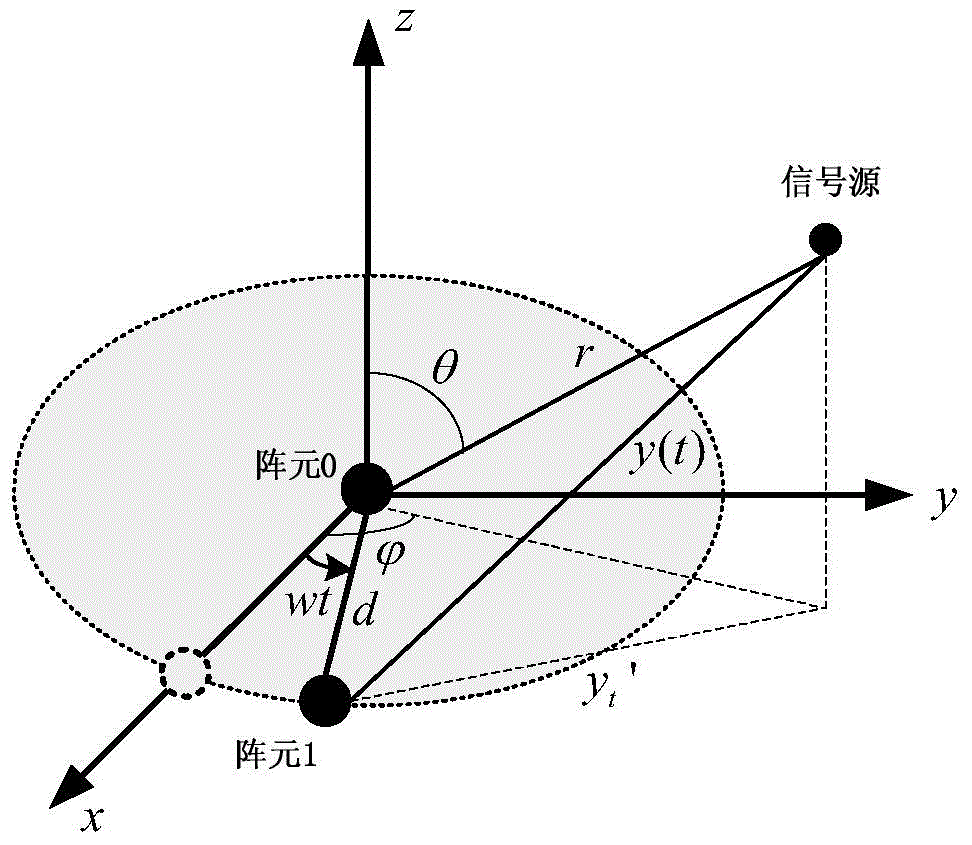Estimation method of parameters of near-field source based on rotating interferometer
A technology of rotating interferometer and parameter estimation, which is applied in the fields of instrumentation, calculation, electrical digital data processing, etc., and can solve problems such as difficulties in engineering application and hardware implementation, high requirements for channel consistency, and high computational complexity
- Summary
- Abstract
- Description
- Claims
- Application Information
AI Technical Summary
Problems solved by technology
Method used
Image
Examples
Embodiment Construction
[0043] refer to figure 2 , the geometric configuration of the rotating interferometer array used in the present invention is: the rotating interferometer is composed of two array elements, namely the reference array element 0 and the rotating array element 1, the reference array element 0 is located at the origin of the coordinate system, and the interferometer is located at the initial moment The x-axis, the plane where the interferometer rotates is the xoy plane, that is, it rotates around the z-axis, d is the baseline length of the interferometer, λ is the wavelength of the electromagnetic wave, and ω is the rotational angular velocity of the interferometer, Respectively represent the pitch angle, azimuth angle and distance of the signal source reaching the reference array element 0, the distance to the rotating array element 1 at time t is y(t), and the projection of y(t) on the xoy plane is y t '.
[0044] refer to figure 1 , the specific implementation steps of the p...
PUM
 Login to View More
Login to View More Abstract
Description
Claims
Application Information
 Login to View More
Login to View More - R&D
- Intellectual Property
- Life Sciences
- Materials
- Tech Scout
- Unparalleled Data Quality
- Higher Quality Content
- 60% Fewer Hallucinations
Browse by: Latest US Patents, China's latest patents, Technical Efficacy Thesaurus, Application Domain, Technology Topic, Popular Technical Reports.
© 2025 PatSnap. All rights reserved.Legal|Privacy policy|Modern Slavery Act Transparency Statement|Sitemap|About US| Contact US: help@patsnap.com



